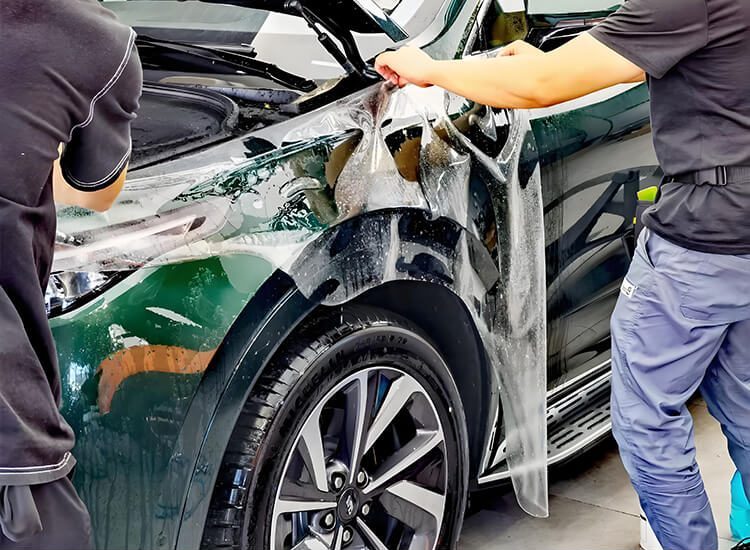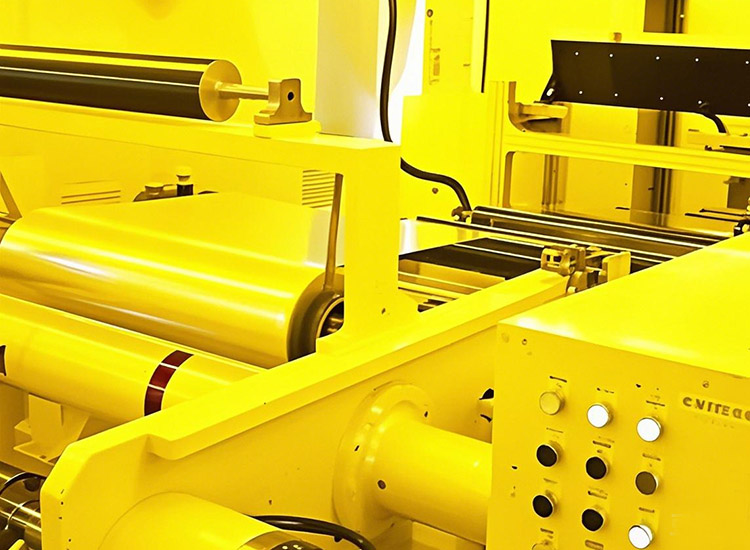7.5mil, 8.5mil or 10mil Paint Protection Film for Cars: Does Thickness Matter?
Choosing the right paint film protection for cars can feel overwhelming, especially when you hear numbers like 7.5mil, 8.5mil, or 10mil being tossed around. Many car owners in cities like Los Angeles, Dubai, or Singapore often wonder if thickness really makes a difference or if it’s just a marketing gimmick. The truth is, paint protection film thickness comparison does matter, but the “best” option depends on your driving habits, environment, and expectations. Let’s explore what these thickness levels actually mean, how they affect performance, and which one might be the best fit for your car.
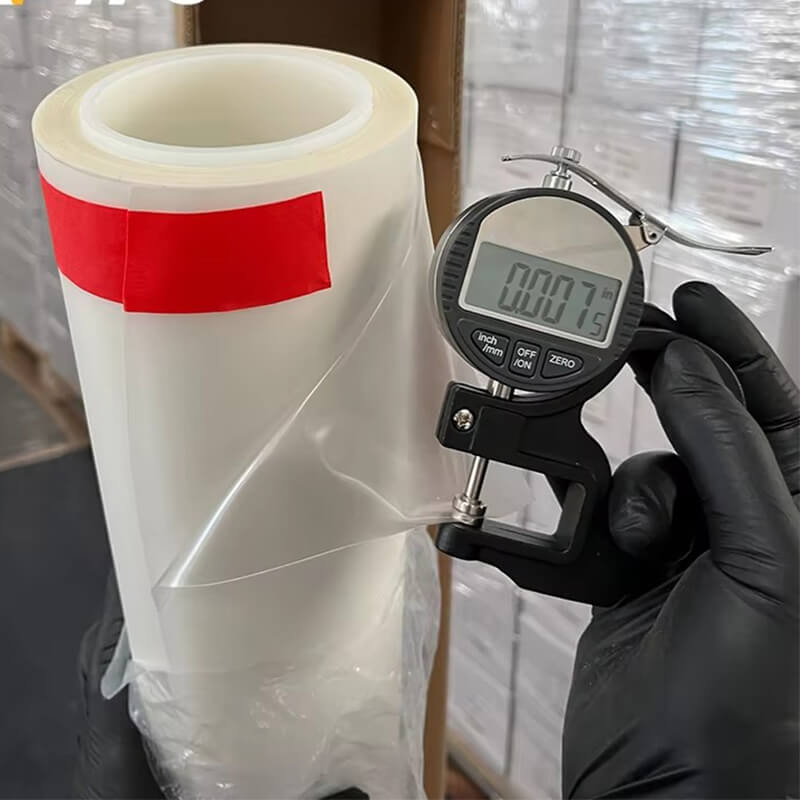
About PPF Thickness for Cars
What Does “Mil” Mean?
When people refer to 7.5mil car paint protection film or 10mil car paint protection film, they’re talking about the thickness of the material in thousandths of an inch. One mil equals 0.001 inches, so 10mil is thicker than 7.5mil. This measurement represents the combined layers of TPU (thermoplastic polyurethane), adhesive, and topcoat.
Standard vs Premium Thickness
Most automotive paint protection film thickness falls between 6mil and 10mil. A 7.5mil paint film protection for cars is often considered a standard option, while 8.5mil paint film protection for cars and 10mil paint film protection for cars are viewed as premium grades. Thicker films usually offer better resistance to rock chips and scratches, but they may also be slightly harder to install and more expensive. For more details on different materials and finishes, check out Types of Paint Protection Film.
7.5mil Paint Film Protection for Cars
Pros of 7.5mil
A 7.5mil paint film protection for cars is lightweight, flexible, and easier to install, which makes it popular for partial coverage areas like bumpers or hoods. For drivers in Germany or other places with smooth highways, 7.5mil can be enough for daily commuting.
Cons of 7.5mil
The main concern is whether 7.5mil paint film protection is enough for cars exposed to harsh conditions. For example, highway driving or gravel roads can cause rock chips that thinner films may not handle as well as thicker ones. If you are price-conscious, you may also want to learn about the PPF Coating Cost before deciding.
8.5mil Paint Film Protection for Cars
Why 8.5mil is a Sweet Spot
Many professionals recommend 8.5mil paint film protection for cars because it balances durability and flexibility. It’s thicker than the entry-level 7.5mil but not as rigid as 10mil, making installation smoother.
Durability and Self-Healing
The self-healing effect on 8.5mil paint protection film is strong enough to recover from swirl marks and light scratches under heat. Drivers often ask, how long does 8.5mil paint protection film last? To learn more, you can read about Car Paint Protection Film Lifespan which gives insights into real-world durability and longevity.
10mil Paint Film Protection for Cars
Maximum Protection
If your priority is rock chip resistance, 10mil paint film protection for cars offers the thickest shield. It’s often marketed as rock chip protection film, perfect for SUVs, trucks, or cars frequently driven on rough terrain. In cities like Houston or Dubai, where sand and debris are common, 10mil is a practical investment.
Downsides to Consider
While 10mil PPF vs 8.5mil durability test results show that 10mil outperforms, some users worry about whether 10mil paint protection film yellows faster or looks bulkier. Installation can also be trickier, so working with an experienced factory-trained installer is key. To explore the impact on resale value and maintenance expenses, check out Hidden Costs of Paint Film Protection for Cars.
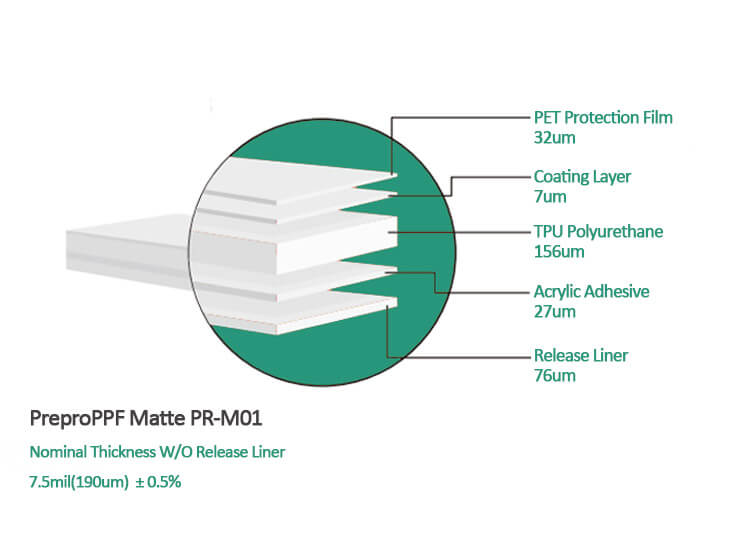
Does Thickness Really Matter?
Protection vs Aesthetics
So, does thickness matter for paint protection film? Yes, but not always in the way you think. Thicker films like 10mil handle deeper scratches better, but they may not necessarily look better. Many car enthusiasts still prefer the sleeker appearance of 8.5mil car paint protection film. If you’re deciding on the finish, you might find Matte or Gloss Paint Film Protection for Cars useful.
The Real-World Comparison
- 7.5mil vs 10mil paint protection film for rock chips: 10mil wins, but 7.5mil can still be sufficient for urban driving.
- Difference between 7.5mil and 8.5mil paint protection film: subtle, but 8.5mil usually lasts longer and resists scratches better.
- Which thickness prevents scratches best? 10mil edges ahead, but only by a small margin compared to 8.5mil.
Choosing the Right Thickness
For Daily Drivers
If you commute mainly in urban areas and park indoors, the best thickness of paint protection film for daily driving may be 7.5mil or 8.5mil. A full breakdown of coverage options and financial considerations can be found in Paint Film Protection for Cars: Cost and Value.
For Luxury or Performance Cars
A recommended thickness of paint film protection for luxury cars is usually 8.5mil or 10mil, because these vehicles need higher durability and resale protection. If you want to explore product reputation, reviews of Top 12 PPF Brands For Cars can help guide your choice.
For Harsh Environments
Drivers in regions with gravel roads, snow, or desert conditions should consider 10mil paint film protection for cars, as the extra layer can save thousands in paint repairs.
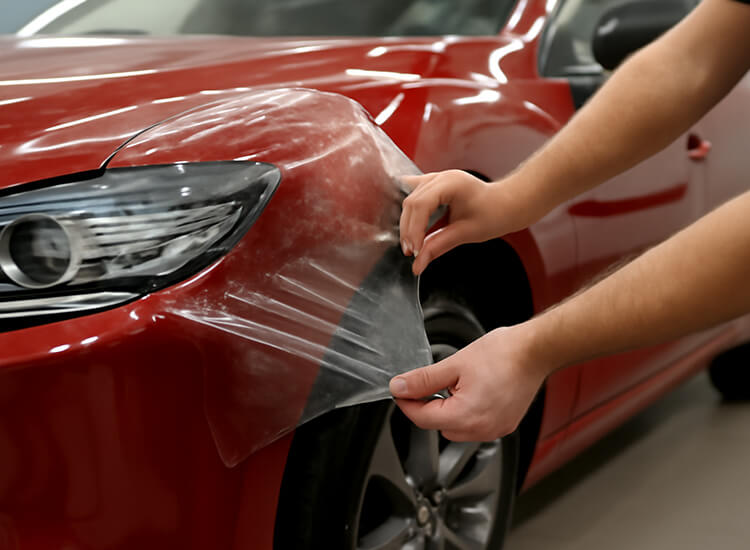
Additional Factors Beyond Thickness
Material Matters: TPU vs PVC
While thickness is important, the composition of the film plays a bigger role. TPU paint protection film vs PVC film shows that TPU has far superior flexibility, clarity, and resistance to yellowing, regardless of thickness.
Installation Quality
Even the best clear bra thickness for cars won’t perform properly if installed poorly. Always work with a professional installer or a trusted paint protection film manufacturer or supplier who provides training and warranty support.
Price Considerations
Naturally, thicker films cost more. Some wholesale PPF suppliers in places like Singapore or Dubai offer bulk pricing for installers, while car owners typically pay more for 10mil due to its premium protection.
PPF Thickness vs Ceramic Coating
It’s also worth noting the debate of 10mil PPF vs ceramic coating for durability. Ceramic coatings are great for gloss and hydrophobic effects but cannot stop rock chips. PPF, regardless of thickness, always offers superior physical protection. For a more detailed analysis, see Paint Film Protection for Cars vs Ceramic Coating.
Maintenance Tips for Any Thickness
Regardless of whether you choose 7.5mil, 8.5mil, or 10mil, proper care is key. Use pH-neutral car shampoos, avoid harsh chemicals, and consider applying a ceramic topcoat for added hydrophobic properties. This way, you’ll maximize the invisible shield film durability no matter the thickness.

PreproPPF Factory Introduction
PreproPPF is a trusted paint protection film factory and supplier with years of expertise in producing high-quality TPU films. With advanced equipment and strict quality control, the company delivers durable and self-healing products that are exported worldwide, including the U.S., Germany, and the Middle East. Whether you are a wholesale distributor, installer, or car enthusiast, PreproPPF provides reliable solutions that protect vehicles and enhance their long-term value.
Frequently Asked Questions
1. What is the best thickness for paint protection film?
The best thickness depends on your needs. For everyday cars, 8.5mil strikes a great balance. For extreme protection, 10mil is the strongest option.
2. Does paint protection film thickness matter?
Yes, thicker films provide more impact resistance. However, installation quality and material (TPU vs PVC) are just as important.
3. Is 7.5mil paint film protection too thin for highways?
Not necessarily. For smooth city driving, 7.5mil is fine. But if you frequently drive on highways with flying debris or gravel, 8.5mil or 10mil is recommended.
